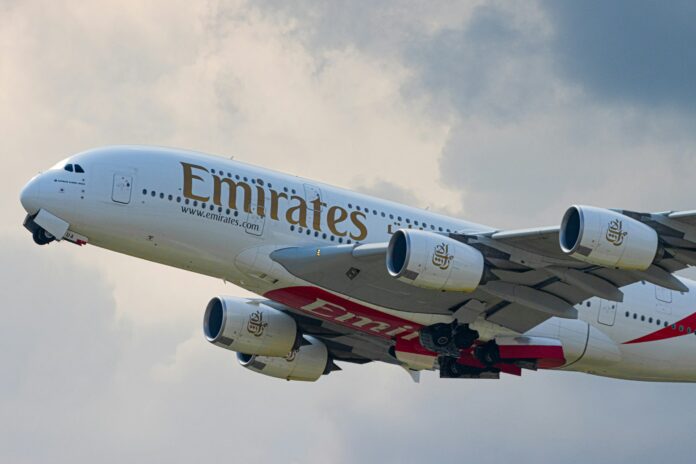The front of a football shirt is among the most valuable pieces of real estate in global sports marketing. It’s seen by millions each week, on TV, in stadiums, and across social media, turning players into walking billboards for global brands. For clubs, front-of-shirt sponsorships are a critical pillar of commercial revenue, often second only to broadcasting rights. But how these deals are negotiated, structured, and challenged by regulation is an evolving story.
Big Money, Bigger Reach
Over the past two decades, shirt sponsorships have evolved from modest local deals into multimillion-pound global partnerships. For top-tier clubs, a single front-of-shirt deal can now be worth £50 million+ per year. Here are some of the most significant examples:
- Manchester United x TeamViewer: In 2021, United signed a five-year deal with German software firm TeamViewer worth £47 million per year. The partnership was one of the largest in football at the time, replacing Chevrolet after a seven-year, £64 million per year deal, still one of the most lucrative ever signed.
- Real Madrid x Emirates: Emirates has been on Real Madrid’s shirts since 2013, with the latest extension reported to be worth €70 million per season, including performance bonuses. Emirates also sponsors Arsenal and AC Milan, aligning with its global visibility strategy.
- Manchester City x Etihad Airways: The City-Group-wide deal with Etihad, which includes shirt sponsorship and stadium naming rights, is estimated to be worth over £400 million across multiple years. It helped transform City into a commercial powerhouse.
- Barcelona x Spotify: In 2022, Barcelona struck a landmark deal with Spotify for both front-of-shirt sponsorship and naming rights to Camp Nou. The total package is estimated at €70 million per season, marking a new era in sports and tech collaborations.
- Chelsea x Infinite Athlete: After a chaotic summer of negotiations in 2023, Chelsea signed a one-year deal with data-tech firm Infinite Athlete, reportedly worth £40 million. The deal marked a shift toward emerging sectors like AI and sports data.
Industries Dominating the Front of the Shirt
Different sectors have strategically used football shirt sponsorships to build brand equity, particularly in the following categories:
1. Airlines
- Emirates (Real Madrid, Arsenal, AC Milan, formerly PSG)
- Etihad Airways (Manchester City)
- Qatar Airways (Barcelona, AS Roma, Boca Juniors)
Airlines favour clubs with global audiences to build brand visibility across continents.
2. Financial Services
- Standard Chartered (Liverpool – £50m/year deal extended to 2027)
- Allianz (Juventus, FC Bayern – kit and stadium naming in some cases)
- American Express (Brighton – integrated stadium and shirt deals)
These companies often target football to gain trust, reach high-income viewers, or support regional expansion.
3. Tech and Telecom
- TeamViewer (Man United)
- Spotify (Barcelona)
- 3 Mobile (Chelsea – until 2023)
- Rakuten (Barcelona, previous deal worth €55m/year)
Tech brands use football to boost consumer awareness and credibility, particularly in emerging markets.
4. Betting and Gambling (Controversial)
- com (Everton, Watford)
- Fun88 (Newcastle United, historically)
- Dafabet (Celtic, Fulham)
- Betway (West Ham United)
At one point, over half of Premier League clubs had betting sponsors on their shirts. These deals were lucrative, often in the £6-10 million per season range, but also drew public criticism due to gambling addiction concerns and targeting of younger fans.
Gambling Ban: The Shift Away from Betting Sponsors
In 2023, the Premier League announced a voluntary ban on front-of-shirt gambling sponsorships, effective from the start of the 2026/27 season. Clubs will still be able to sign gambling partners for sleeve or training kit placements, but the main shirt front, the most visible spot, will be off-limits.
The move followed increasing pressure from campaign groups, fans, and government. Italy and Spain have already implemented stricter bans on gambling sponsors in football, and similar conversations are ongoing in other countries.
While the financial hit may affect smaller clubs more significantly, the shift is opening up new categories, including crypto (though also volatile), fintech, e-commerce, and sustainability-focused brands, looking to fill the gap.
How These Deals Are Structured
Front-of-shirt sponsorship deals are typically multi-year contracts (3–5 years standard, sometimes longer) negotiated between a club’s commercial team and a brand’s marketing/partnerships department. Agents or specialist agencies often facilitate introductions and negotiations.
Key elements include:
- Annual Fee: Fixed payments, often escalating yearly.
- Bonuses: Based on performance (Champions League qualification, trophy wins, etc.)
- Image Rights: Use of players in advertising, campaigns, or activations.
- Global Rights: Many deals include rights to use the club’s branding across international campaigns.
- Digital Integration: Increasingly includes social media campaigns, AR/VR activations, and data-sharing agreements.
- Kit Inventory: Clubs also offer branding on training kits, warm-up gear, and youth squads as part of bundled packages.
Premium brands (like Emirates or Standard Chartered) often require brand exclusivity clauses and may include values alignment or reputational protection clauses, which allow the sponsor to walk away if the club becomes embroiled in scandal.
The Commercial Value
For elite clubs, shirt sponsorships can account for 10-25% of annual commercial revenue. For clubs with smaller broadcast deals or without European football, that percentage can be even higher.
For example:
- Manchester United reportedly earns £200m+ annually from commercial revenue, with shirt sponsorship making up nearly a quarter of that.
- Everton’s £10m/year deal with Stake.com represented a significant portion of its commercial income before the Premier League’s gambling clampdown.
Final Thoughts
Front-of-shirt sponsorships are no longer just about slapping a logo on a kit, they are long-term strategic partnerships that link club identity with brand equity. As football’s commercial landscape evolves, clubs must balance financial gain with values, fan sentiment, and growing regulatory scrutiny.
The smartest deals are those that go beyond visibility, offering fans meaningful activations, global engagement, and alignment with the club’s brand. In a world where everything is under the spotlight, especially on the pitch, the logo on the chest is both a statement and a story.

